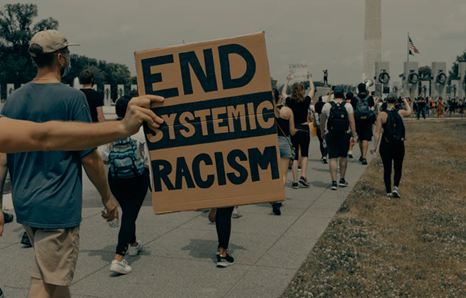Darrell Bock is an evangelical scholar, and Bart Ehrman is an agnostic one. Yet according to Jeffrey Weiss of the Dallas Morning News, they have the same opinion about the so-called “Jesus Tomb.” It’s a bunch of “hooey”!
I think this story has just about run its course. It became clear by mid-week that no reputable scholar (Christian or non-Christian) wants to attribute any credibility to the ideas put forth in James Cameron’s forthcoming documentary “The Lost Tomb of Jesus.” Except for the initially credulous coverage by the mainstream media, the rejection has been virtually unanimous.
Here’s an updated list of resources concerning the “Jesus Tomb.”
Biblical Scholars and Statisticians
3/5/07
3/4/07
“The Tomb Computation” – Andrey Feuerverger
3/2/07
“Did They Really Find Jesus’ Bones?” – Craig Blomberg
3/1/07
“The alleged ‘Jesus family tomb'” – Richard Bauckham
“The Smoking Gun—Tenth Talpiot Ossuary Proved To Be Blank” – Ben Witherington
“The Stats – Feb 28” – Darrell Bock
“More Ideas on the name Mariamne to Come from Europe and Another Opinion – March 1” – Darrell Bock
2/28/07
“Problems Multiple for Jesus Tomb Theory” – Ben Witherington
“Initial Impressions of The Jesus Family Tomb” – Dr. Charles L. Quarles
2/27/07
Interviews with Ben Witherington and Darrell Bock – Jerry Johnson Live [MP3]
[Podcast]
“The Jesus Tomb” – Andreas Köstenberger
2/26/07
“The Jesus Tomb? ‘Titanic’ Talpiot Tomb Theory Sunk from the Start”- Ben Witherington
“Hollywood Hype: The Oscars and Jesus’ Family Tomb, What Do They Share?” – Darrell Bock
“Talpiot Tomb” – Tyler Williams
“Who’s Writing the Fiction Here?” – Paul L. Maier (Stand to Reason Blog)
2/25/07
“Talpiot Tomb” – Mark Goodacre
2/24/07
“The Jesus Dynasty: How to Explain Away the New Testament” – Darrell Bock (Christianity Today) (May 2006)
“The Jesus Ossuary: A Critical Examination” – Michael S. Heiser (2003)
Popular Coverage
3/4/07
3/1/07
“Sinking Credibility: The Media and the Bones of Jesus” – Chuck Colson
“Piper on Jesus’ Tomb” – John Piper
2/28/07
“‘Lost Tomb of Jesus’ Claim Called a Stunt” – Washington Post
“Eight Reasons Why I Believe That Jesus Rose from the Dead” – John Piper
2/27/07
“Is This Really ‘The Lost Tomb of Christ’?” – The Albert Mohler Radio Program [MP3]
“An Exclusive Interview with James Cameron” [satire] – Ted Olsen (Christianity Today)
2/26/07
“Is This Jesus’ Tomb” – David Van Biema (Time)
“Matt Lauer Boasts Today Exclusive ‘That Could Rock Christianity to its Core'” – NewsBusters
“Bible Scholars: Ten Reasons Why Jesus Tomb Claim is Bogus” – Dakota Voice
2/25/07
“New film claims Jesus buried in Talpiot” – David Horovitz (Jerusalem Post)




12 Comments
Pingback:
luthsem/rich
Good job on reporting on this anti-Christian publicity stunt. The sad truth is the biblically and theologically illiterate falls for this stuff.
Trace
Through all this coverage of this farce, I can’t quit thinking about the words of Paul in 1 Cor. 1:18….”the word of the cross is foolishness to those who are perishing…”
Kevin Rhyne
Trace,
Yeah, but later he says, “…but, to those who are called, Christ the power of God and the Wisdom of God…” This whole thing is a stark example of the lost surpressing the truth because their deeds are evil. Thank God for His grace.
Pingback:
Trace
Kevin,
How right you are!!
Pingback:
Pingback:
Pingback:
Pingback:
Pingback:
Itamar Bernstein
I’ve been studying this find for years, long before it became public knowledge following the mass media exposure. I believe that it’s a serious find, which warrants further study.
The critics of this find’s magnitude basically argue:
1. That the Jesus family would be buried in Nazareth, not Talpiot;
2. That the ‘Jesus’ ossuary would have been inscribed ‘of Nazareth’;
3. That the Jesus family couldn’t have afforded a tomb like the Talpiot tomb;
4. That the “Jesus son of Joseph” ossuary is not inscribed “Yeshua” (Jesus) at all;
5. That the names inscribed on these ossuaries were supposedly common;
6. That the “Mariamne” ossuary didn’t contain the remains of Mary Magdalene, but of two other women;
I believe the first five of these allegations against the book’s premise don’t carry much water. The sixth argument actually supports the conclusion that this is the real thing. My comments:
1. Talpiot is the right place for Jesus’ family tomb- Per Luke, 2:3-4, the family’s LEGAL residence was Bethlehem, not Nazareth. The fact that Joseph and the pregnant Mary could not take the census in Nazareth but had to take it in Bethlehem indicates that Bethlehem was their DOMICILIUM under Roman Law. That basically means that they had no intention to reside in Nazareth permanently. Therefore it would have made little sense for them to have a family tomb in Nazareth, that they wouldn’t be able to frequently visit at a later stage in their lives. They would have wanted a family tomb close to Bethlehem and Jerusalem, easily accessible also to future generations of the family. The fact is indeed that Mary and her children moved to Jerusalem around 30 AD.
2. The traditional name of Jesus in Hebrew, as reflected also in the Talmud, is “Yeshu Hanotzri.” This appellation stems from “Netzer” (Shoot or Branch). It alludes clearly to Isaiah 11:1, indicating the Royal birth of Jesus, to substantiate his claim for Jewish messiahship. Not to indicate the place he comes from.
There’s actually no evidence in Jewish sources, such as the Old Testament or the Mishna and Talmud, that a place called “Nazareth” even existed in or before the first century. I’m not disputing the evidence per the NT, that there was indeed a place called Nazareth. But to the best of my knowledge, there’s no mention of Nazareth at all in any ancient writings outside the New Testament. So the place existed, but nobody knew about it. And those in close proximity in Galilee who did know about it, obviously thought derogatorily of it , cf. “can anything good come from Nazareth?” (John 1:46.) Therefore there was no reason to call Jesus “of Nazareth.” Either in life or on an ossuary. He was called “Jesus the Branch” (of David) in Hebrew/Aramaic.
The line of argumentation detracting this discovery around the supposed Nazareth origin of Jesus’ family may therefore be based on a very shaky foundation.
3. Talpiot is located about 2.5 miles North of Bethlehem. Jesus’ family, of Davidic descent according to the New Testament, could have held the burial cave there even before it moved to Nazareth. Davidic birth was absolutely the most exalted in Judaism, always. The suggestion that any person of Davidic descent could be of the lowest social echelon, that couldn’t fund or get funding for a burial cave, doesn’t make much sense, if any. There’s substantial evidence to the contrary, e.g. 1. Jesus had some very wealthy active supporters like Joseph of Arimatea and Nicodemus (known as Nakdimon ben Gorion in post biblical Jewish sources-one of the richest Jews in Judea;) 2. Josephus, A.J. XX, 9:1. Note the prominence of James, brother of Jesus.
4. The inscription on the Jesus ossuary does say “Yeshua bar Yehosef” (“Jesus son of Joseph”)to my eye. All letters but one are quite clearly there. The only letter which is somewhat more difficult to discern at first blush is the second letter- “Shin”. That’s because it’s written in a somewhat irregular form (in a regular Shin there are three teeth in the fork, pointing upwards. Here there are two teeth, pointing sideways to the right.) But that particular irregularity appears also on other ossuaries- notably numbers 9 (this one has two “Shin”- one with three teeth pointing to the right, and one with TWO teeth pointing to the right. Exactly like the subject inscription) and 121 in the Rahmani catalogue, which both feature also a “Yeshua.”
Still, the name “Yeshua” on this ossuary is among the most, if not the most, difficult to read names of all ossuaries listed in Rahmani’s catalogue of Jewish ossuaries. It is almost written as a person’s complex signature on a check. Contrast that with the patronymic following the first name. This is written in a simple straightforward fashion, which is very easy to read. There’s no other example in Rahmani’s catalogue of a first name that has to be deciphered, and a patronymic that’s so plain and clear. Is this merely a coincidence?
5. Some critics make the following comment to my post:
“The inscription, Pfann said, is made up of two names inscribed by two different hands: the first, “Mariame,” was inscribed in a formal Greek script, and later, when the bones of another woman were added to the box, another scribe using a different cursive script added the words “kai Mara,” meaning “and Mara.” Mara is a different form of the name Martha.
According to Pfann’s reading, the ossuary did not house the bones of “Mary the teacher,” but rather of two women, “Mary and Martha.'”
Here’s my thought about that:
If the Mariamne ossuary indeed housed the bones of Mary and Martha, these are two sisters of NT fame. One of them could have been married to “Jesus son of Joseph.” -Whether or not she was Mary Magdalene (Maybe the Mary who anointed Jesus’ feet and then dried them with her hair- very intimate scene.) The other sister would than also automatically belong in the family. It still fits. Actually it increases the statistical odds that this is the real thing quite substantially.
This is a very intriguing possibility indeed, fitting perfectly with John 12:3. Intimate contact with a man, as described in this NT passage, was allowed only to a woman who was an immediate blood relative of that man, his wife (…or a working woman.) That’s all. Therefore Mary of Bethany was quite possibly by elimination Jesus’ wife or in the process of becoming his wife. In that context, Margaret Starbird already theorized that similar anointing with spikenard oil was part of pre marriage ritual of a Davidic king, per certain passages in the Song of Songs. Note also that intercourse by itself was sufficient under Jewish Law in certain circumstances to constitute valid marriage. That practice, termed Bi’ah marriage, was abolished in the 6th century, but it was lawful in Jesus’ time.
Mary of Bethany could have become pregnant by Jesus while he stayed at her house, shortly before his crucifixion. In that case it’s quite possible that she bore Jesus’ son posthumously and named him “Judah.” And in that case both she and her sister Martha would have become part of Jesus’ family, which earned them a place in the Talpiot family tomb..
Reminds me of the reaction to this find of a BBC reporter in 1996- It seems like all balls in the national lottery coming one by one.
I have no knowledge of Greek, so I can only discuss the two propositions. Assuming that the ossuary does say “Mary and Martha”, here’s what I think the names are:
* 1.”Jesus son of Joseph”(“Yeshua bar Yehosef” in Hebrew/Aramaic script;)
* 2. “Mary” (“Marya” in Hebrew/Aramaic script);
* 3. “Joseph” (“Yose” in Hebrew/Aramaic script. Precise nickname of Jesus’ second brother- cf. Mark 6:3);
* 4. “Mary and Martha” (“Mariame kai Mara” in Greek)-they must have been sisters because Jewish law didn’t allow burial together of two unrelated women;
* 5. “Matthew” (“Matya” in Hebrew/Aramaic script)- Name of Jesus’ first cousin, son of his father’s brother Alphaeus/Clophas. As James Tabor suggests in a different context, Matya could also well have been Jesus’ half brother, considering a certain specific rule of the Torah (Deuteronomy 25:5-10.) This rule was applied in Jesus time- see Matthew 22:24-28;
* 6. “Judah son of Jesus”(“Yehuda bar Yeshua” in Hebrew/Aramaic script.)
* Therefore out of eight names actually inscribed on these ossuaries (including the “Joseph” father of Jesus on the first ossuary) four names undoubtedly relate to Jesus’ immediate family, and three other names relate to the same with a somewhat lower probability. In any event, they all relate to Jesus’ extended family. Note that first century Jewish family tombs were usually a clan thing.
* The eighth name is “Yehuda bar Yeshua”- must have been the son of Jesus and one of the sisters Mary or Martha. More likely Mary, as explained above.
6. While the full versions of all these names were indeed common in Jesus’ time, the derivatives, nicknames and contractions were not. Thus “Yeshua” for Jesus was less common than “YeHOshua;” ditto “YeHOsef” instead of “Yosef” for Joseph; “Marya” for Mary was extremely rare in Hebrew/Aramaic script; “Yose” for Joseph is unique. Therefore out of these eight names, two are irregularities, one is a particularity, and one a singularity.
BOTTOM LINE- Ask yourself inversely a hypothetical question- If the Talpiot tomb hadn’t yet been found, how would Jesus’ family tomb have looked , which ossuaries would it have contained, to when would it have been dated and where would it have been located.
I would have thought of a tomb just like the tomb we’re discussing. It fits perfectly with what I’d have expected Jesus’ family tomb to be. Right place, right period, right names. I therefore believe that this matter, delicate as it obviously is, warrants further investigation. This could include opening and examination of the adjacent tomb, and forensic examination of the skeletal remains found in the Talpiot ossuaries, and apparently reburied back in 1980. These could hopefully be relocated by comparison to the mithochondrial DNA samples already taken from two of these ossuaries.